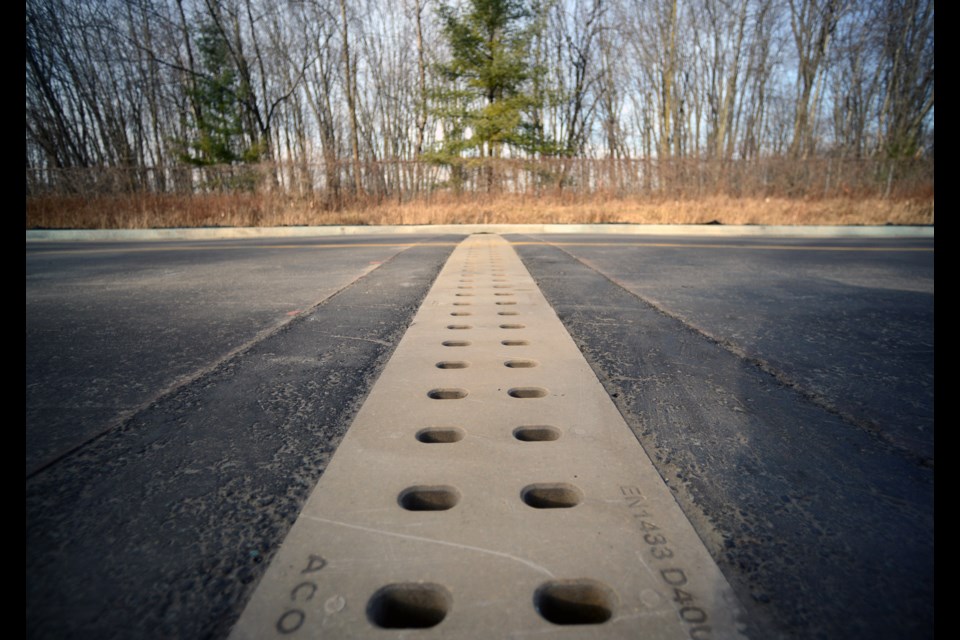Reptiles, amphibians and other wildlife are crossing city roads more safely these days and avoiding becoming roadkill – at least in areas where wildlife tunnels have been built below the road surface.
Since the tunnels were installed during the 2017 reconstruction of Eastview Road, west of Watson Road, monitoring shows they’ve proven quite popular, reducing the roadkill rate by 73 per cent for 2019 and 2020, states a recently released city report.
“It’s great to have the data to show that these really do work,” said Leah Lefler, environmental planner for the city. “It is an additional cost to include the planning and the design and implementation of wildlife tunnels, but they’re extremely effective.”
The tunnels are about 60 cm wide, 50 cm tall and run the width of the road, with open “windows” in the road surface to allow for light to get through, as well as address moisture levels and air temperature, Lefler explained. Fencing put up in the area prevents animals from crossing the road at surface level in other spots and directs them to tunnel entrances.
Cameras have captured a range of amphibians and reptiles using the tunnels, including mink, weasels and even birds.
Wanna see an ACTUAL #turtle using our new #wildlife crossings? These make it safe for people and critters to get where they're going! pic.twitter.com/TTycRKhG7v
— City of Guelph (@cityofguelph) June 14, 2018
“Roads are a barrier to wildlife movement and sometimes they can be a barrier to wildlife reaching their breeding grounds,” Lefler said. “This is a way that we can keep biodiversity in the city but also protect the genetics of the population.”
Similar tunnels were also installed along a section of Niska Road in 2019, but monitoring showed there are problems with fencing used to funnel wildlife to tunnel entrances, which has made them less effective. New fencing is planned to be installed there this year, followed by two years of monitoring.
The concept of wildlife tunnels is not new to Guelph, which installed larger culvert-style wildlife tunnels several years ago on Laird, Maltby and Stone roads.
“Previously, there were bigger culverts,” said Lefler. “It’s an evolving and emerging science. More is being learned about what works, what doesn’t work.”
The inclusion of “windows” has allowed tunnels to be smaller in size and remain effective, Lefler noted as an example. None of the earlier tunnels in the city feature those surface holes. The material on the ground inside tunnels has also changed.
In addition to saving lives, the tunnels have allowed city staff to confirm the presence of milk snakes along that stretch of Eastview Road – something Lefler said they suspected but had no evidence of until now, as they were captured on camera.
Preparation of a road ecology guideline was identified as a priority action item in the natural heritage action plan approved in 2018. Those guidelines, which include process and details about wildlife tunnels such as dimensions, maintenance and more, is a work-in-progress and expected to be finalized next year.
“It’s great to have an engineering department that is thinking outside the box and incorporating newer tools,” Lefler said, explaining this is a joint effort between the two city departments.
“We’re going to keep doing these as road reconstructions go,” she added of wildlife tunnels. “We have a pretty good idea already where the hotspots (of animal crossings) are because we’ve done that monitoring work.”
